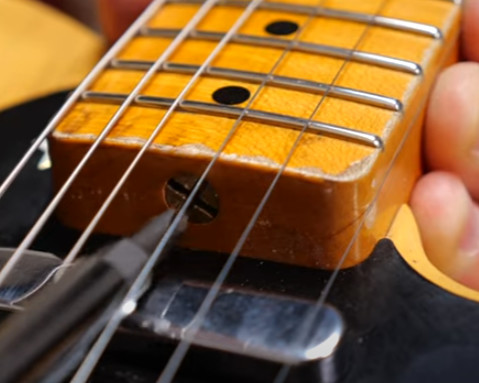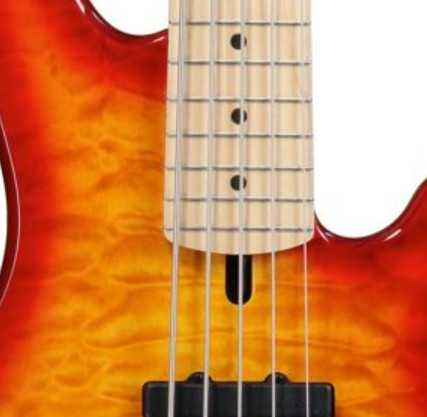Thanks all, feeling like a very partsy partscaster to me.
I wondered about aftermarket neck and decal as well.
I don’t think its worth the trouble.
I don’t buy basses to resell, but, don’t want something that will be hard to resell down the road either if it is a jumbled partscaster.
It is nice looking, but will put the funds to something else.
New water heater?
I’m sure there is, after all it’s just a different nut. However, the mechanics of replacing it (may need to delaminate the fingerboard to get access) and routing a pocket in the body would make this prohibitive. You probably wouldn’t do it on a cheap bass, because it’s just not worth it. And you wouldn’t do it on an expensive bass, because you’d lose any resale value.
Yeah it would require a completely different truss rod to go that route or the route most manufacturers use. Fenders just have a flathead or phillips screw head 

You’d have to rip that thing out and put in one with a wheel or a proper allen socket in the end nut.
I swear I have no idea why they still do this. This is beyond “keeping it real” vintage. This is like intentionally contracting tuberculosis because your ancestor did. Would anyone really care if they put in real access to the truss rod?
Oh, I bet there are people out there who devote their empty, insignificant lives to chasing “the pure”. And I bet they come up with whole encyclopedias of “technical” reasons for it. However, the sad truth is that they probably have never met women in their lives whose last name wasn’t .jpg (I say this in the all but certainty that these purists will be almost exclusively male).
Oh yeah. ![]()
This is what puzzles me, just put in the little routed out cavity like others do and you can use any tool.

Yeah it’s just weird.
I get why they did it in the 50s. No excuse today not to have easy access. It’s not like it affects the vintage sound
J and P necks are perfectly compatible, the neck pocket is the same
you can often tell by the serial number, usually written on the headstock (front or back depending on the era)
anyway this P looks gorgeous, I love the color !
good point, or possibly a re-done decal. which asks if the neck is really a Fender …
not always, a lot of Fender just have a blank plate
yeah
I swapped a jazz neck on my P body, no problems
Parts is parts man. I mean, I get it if people want a “genuine factory-assembled” thing with proper paperwork and provenance and whatnot. But an instrument is an instrument. If there is nothing wrong with it and it plays well, what does it matter whether the neck is original or not?
Close….no.
At $600 it may be a good deal Ana may be rubbish made to look like one. But it’s not exactly what I want in the “straight P” department, so going to pass. It is really cool looking though.
To any one reading this that isn’t familiar with Fender, all but the models made specifically to mimic old basses do have modern truss rod access at either the top of the neck or at the body (on higher end models).
Yeah - most I have seen have it at the headstock. Most are fine.
I just find it weird that they still make these at all. ![]()
@John_E fender necks are interchangeable. Very rare instances that you’d run into some problem. A specific example would be American deluxe precision bass body with an American Fretless Tony Franklin neck fits but not fully function. Why? Because the American deluxe precision comes with special 22 fret neck instead of the usual 20-21 fret. I had a really hard time with the intonation do I dropped it off at my trusted shop 13th street guitars, after they scratched their head a few times they figured it out. So the solution is to move the bridge back which means I can use the string through body function. Oh well. This is a very rare occasion that neck swapping does not work. The rest of time you should not have any problems at all.
Hate to bring this up but Is it me or the “Fender” on the headstock looks sanded down but not “precision”. If it’s a good price and you don’t plan to sell it then there’s no problem.